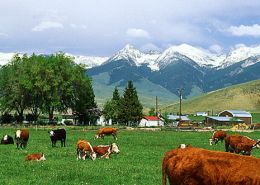Supply Chain Auditing for Poultry Production in Thailand
Place: Thailand • Dates: 2008 • Partner: FAO
This project provided a schematic overview of the supply chain and resource flows for three models of poultry production in Thailand: backyard producer, medium contractor, and industrial scale. By elucidating the vertical and horizontal linkages that bind these actors into a web of formal and informal economic relationships, we aimed to facilitate better understanding of how actors will be affected by changes in policy regulation or shocks to the sector. For the Thai poultry sector, this is important for several reasons. Large scale industrial poultry production is one of the economy’s most important sources of animal-derived food, employment, and income. At the other extreme, smallholder backyard production remains nearly ubiquitous across an extensive low income rural population. The former group is tied to some of the most important food industries in the economy, and the health of the industrial sector is critical to the country’s trade and urban living standards. The latter group is linked through local livestock markets to low income networks of small enterprises that spread pro-poor multiplier effects across most of the country’s diverse land area.
We conclude that each production model has advantages and disadvantages and none is likely to disappear completely. This kind of structured perspective on an essential food and livelihood sector can support more effective actions by decision-makers who have the responsibility to design and implement policies affecting a broad spectrum of market participants.
Most Recent Entries

Low Carbon Biomass Conversion in the Sierra Nevada





